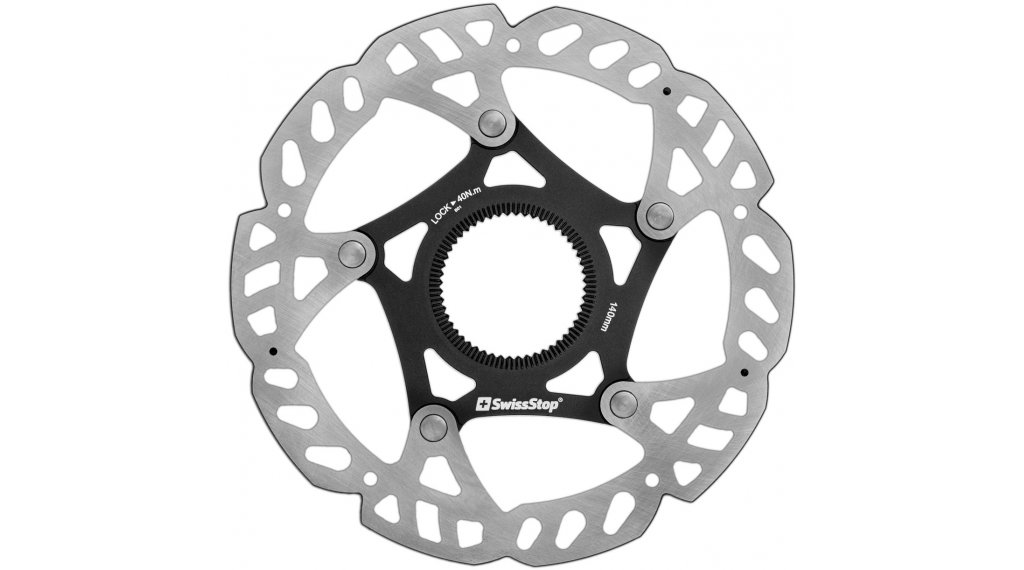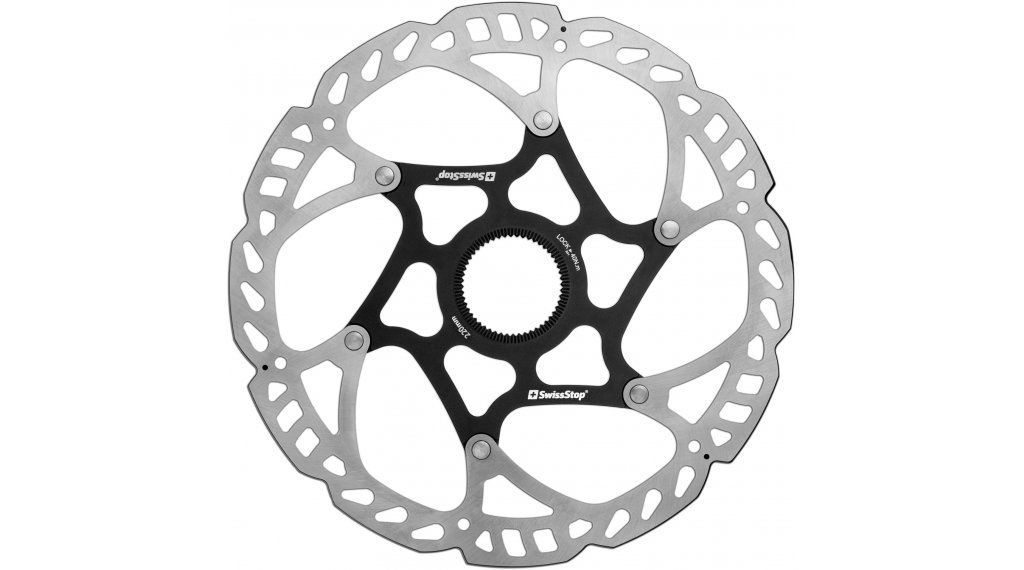Ready for any use
At the beginning of 2015, the SwissStop engineering team carried out a series of laboratory tests on brake discs for bicycles. The engineers then constructed digital models of these rotors and simulated the same test conditions with highly developed software. The data comparison confirmed that the simulations were accurate and effective, after which a number of digital prototypes were developed, thoroughly tested and evaluated.
New design - better performance
The heat transfer in the individual models was measured extensively with the help of simulation software. Based on the respective relationship between convection, radiation, surface and weight, the optimal design was determined in order to achieve maximum heat dissipation and strength with minimum weight. The structure of each design was evaluated using braking forces ranging from normal hand strength to the theoretical maximum. Critical pressure points in the structure were identified in order to maximize the strength and rigidity of the rotor.
With the help of CFD simulations (Computational Fluid Dynamics), the air flow over the rotor surface and through the cut-outs was measured. A selection of profiles was tested to determine the effects of asymmetrical slots and to optimize the cooling effect of the airflow on the surfaces. The thermodynamic simulations, structural analyzes / material analyzes and fluid dynamic visualizations were carried out in cooperation with the institute of the University of Applied Sciences, HSR in Rapperswil.
The final design was confirmed and visualized using further thermal and structural simulations. A two-piece design consisting of a spider (7075-T6 aluminum alloy) and a SUS410 stainless steel friction ring was chosen to strike the right balance between light weight, reliable heat control and structural performance.
The laboratory test of the Catalyst Disc Rotor confirmed the results of the technical simulations. In the endurance test, the Catalyst delivered outstanding results. While conventional braking systems wear out over time and the material ultimately fails (fading), the Catalyst offers a braking torque that remains constant over the long term. Further tests showed extremely effective heat management, significantly shorter braking distances, very little wear and tear, and structural durability under heavy braking. Overall, the Catalyst outperformed the current market-leading models.
Through practical tests with prototypes, the development team determined the optimal relationship between two essential but contradicting characteristics: braking performance and weight. A few carefully measured extra grams of material on the outer ring immediately resulted in shorter braking distances. Engineers added material to certain rotor sizes to further improve performance and durability.
properties
P100005612
Material: stainless steel
Construction: 2-part
Attachment: Centerlock (lockring optionally available)
Diameter: 140mm
Lining thickness: 1.85mm
P100005493
Material: stainless steel
Construction: 2-part
Attachment: Centerlock (lockring optionally available)
Diameter: 160mm
Covering thickness: 1.80mm
P100005494
Material: stainless steel
Construction: 2-part
Attachment: Centerlock (lockring optionally available)
Diameter: 180mm
Covering thickness: 1.90mm
P100005708
Material: stainless steel
Construction: 2-part
Attachment: Centerlock (lockring optionally available)
Diameter: 203mm
Pad thickness: 1.95mm
P100006045
Material: stainless steel
Construction: 2-part
Attachment: Centerlock (lockring optionally available)
Diameter: 220mm
Pad thickness: 1.95mm
Technologies used
In this chapter we explain the technologies that the manufacturer uses for this product.
Powerful and durable
Powerful braking and high durability, available in five sizes for all applications from road to cyclocross, cross country and downhill to e-bikes. Different material thicknesses depending on the rotor diameter, targeted use of material at significant points and a friction ring made of SUS410 stainless steel increase braking performance and longevity at the same time.
Approved for road racing by the UCI
On January 1st, 2017 the Union Cyclist Internationale (UCI) started the 2nd test run for disc brakes in road cycling. The brake discs must not have any 90 ° edges on the outside. The SwissStop Catalyst discs have been approved for road racing due to their rounded edges on the outside.
Practical wear indicators
Three small holes on each side of the rotor indicate exactly when the brake disc should be replaced.














